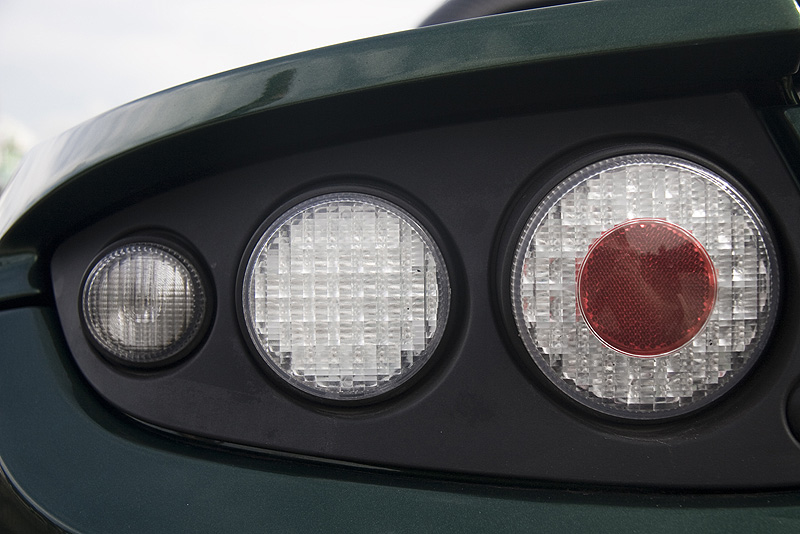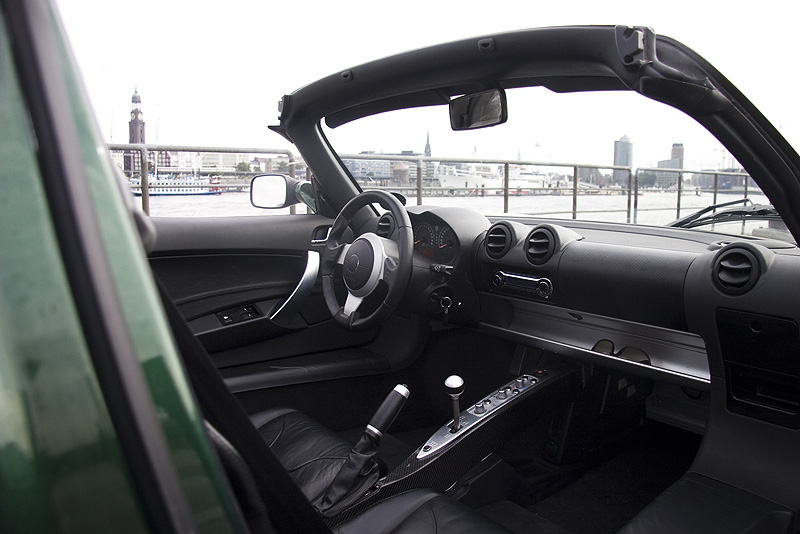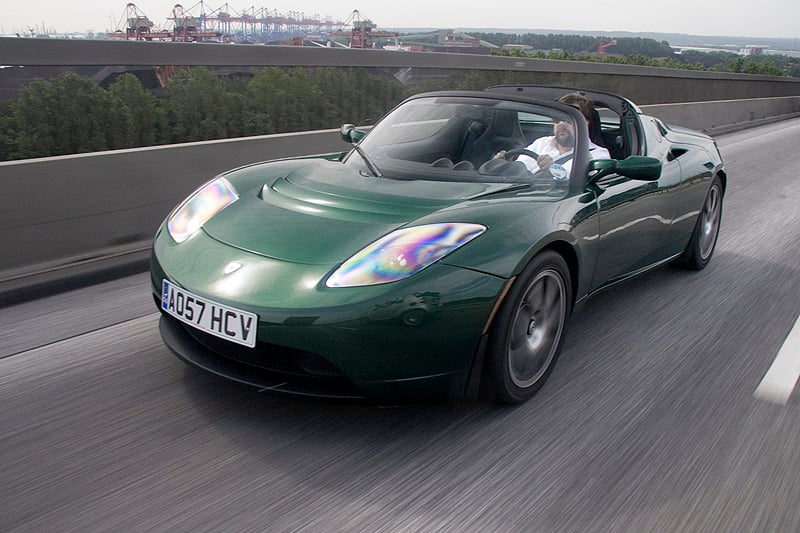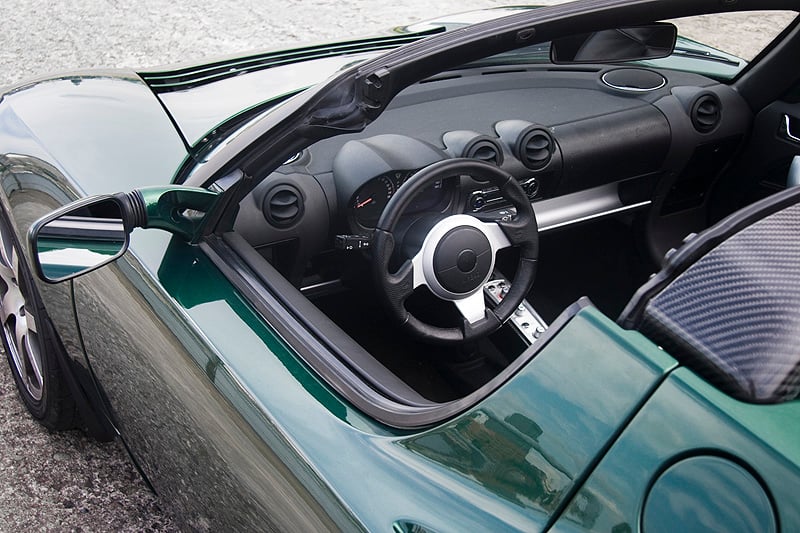
Beautiful and fast, in California the Tesla Roadster is claimed to be a ray of hope for a paralysed automotive industry. ‘Anyone who's anyone’ in Hollywood has their name on the long waiting list for the electric sportscar – but is there convincing technology behind the hype?
Tesla's place in the alternative fuel race against the major players is depicted by the media as a David and Goliath battle – with some justification. While the large corporations go timidly from one piece of research to another, the Tesla Roadster has been in production in the US for some months, and in Europe the first car is due for delivery next spring.


St. Pauli, Hamburg, Friday morning. Three prototype Teslas line up outside a boutique hotel for the European media launch. It's a compact sportscar with classic Lotus proportions. Sliding into the deep cockpit, I turn the ignition key. Silence – it takes a while to adjust to the fact that there is no engine roar. To move forward I select 'D', come off the brake and step timidly on the accelerator. The car moves silently into the street.


A little more pressure on the pedal and the Roadster is pulled forward as if by a ghostly hand. The streets are empty, the sun comes out and, after months of hypothesis and debate, I am sitting in the car of the future. And it's a liberating feeling.

For the few tourists out on a morning stroll the silent sportscar comes as a surprise and, like lemmings, they are drawn to the bonnet; the combination of noise and speed is deeply rooted in people's minds. I head towards the harbour, in the direction of some long straights. Although the Roadster's not exactly a lightweight, at 1.2 tonnes, the 300hp electric motor has a maximum torque of 340Nm. Tesla claims a 0-62mph time of 3.9 seconds, so I put my foot down.


At first it's a little like a Porsche or Lamborghini – or a rollercoaster ride. With other sportscars you can hear the engine working, but the Tesla Roadster seems to move forward effortlessly. I take it up to its top speed of 125mph, accompanied solely by the soft hum of the electric motor and the whistling of the wind; and I can't remember when I had more fun driving.


The framework and the carbon body come from Lotus, and were assembled at Hethel. Tesla estimates that the car can travel up to 350km between charges and that a full charge using the High Power Connector (included in the price) takes as little as 3.5 hours, with the car costing around nine euros to 'fill'.


But, in spite of the driving experience and environmental-friendliness, although it's had a kickstart in California, it may struggle to find a ready market over here. 250 Tesla Roadsters go on sale in Europe in May 2009, 80 of which are already sold. This is the 118,700-euro 'Signature Edition', more technically sophisticated than the first American series and with a more powerful engine and modified gearbox. It's been designed for metropolitan areas but, so long as our cities don't have California-style tough emission laws, buyers will struggle to see a financial advantage over, say, a petrol-driven Lotus Elise.

And yet... the electrifying feeling of driving the first real sportscar of the future through the streets of Hamburg isn't a rational pleasure. Yes, the drive technology is still in development, and battery life and charging time need to be improved before a mass market is secured. But, if you have some money and a pioneering spirit, you may well be tempted to invest.
Text & Photos: Jan Baedeker








ClassicInside - The Classic Driver Newsletter
Free Subscription!





















